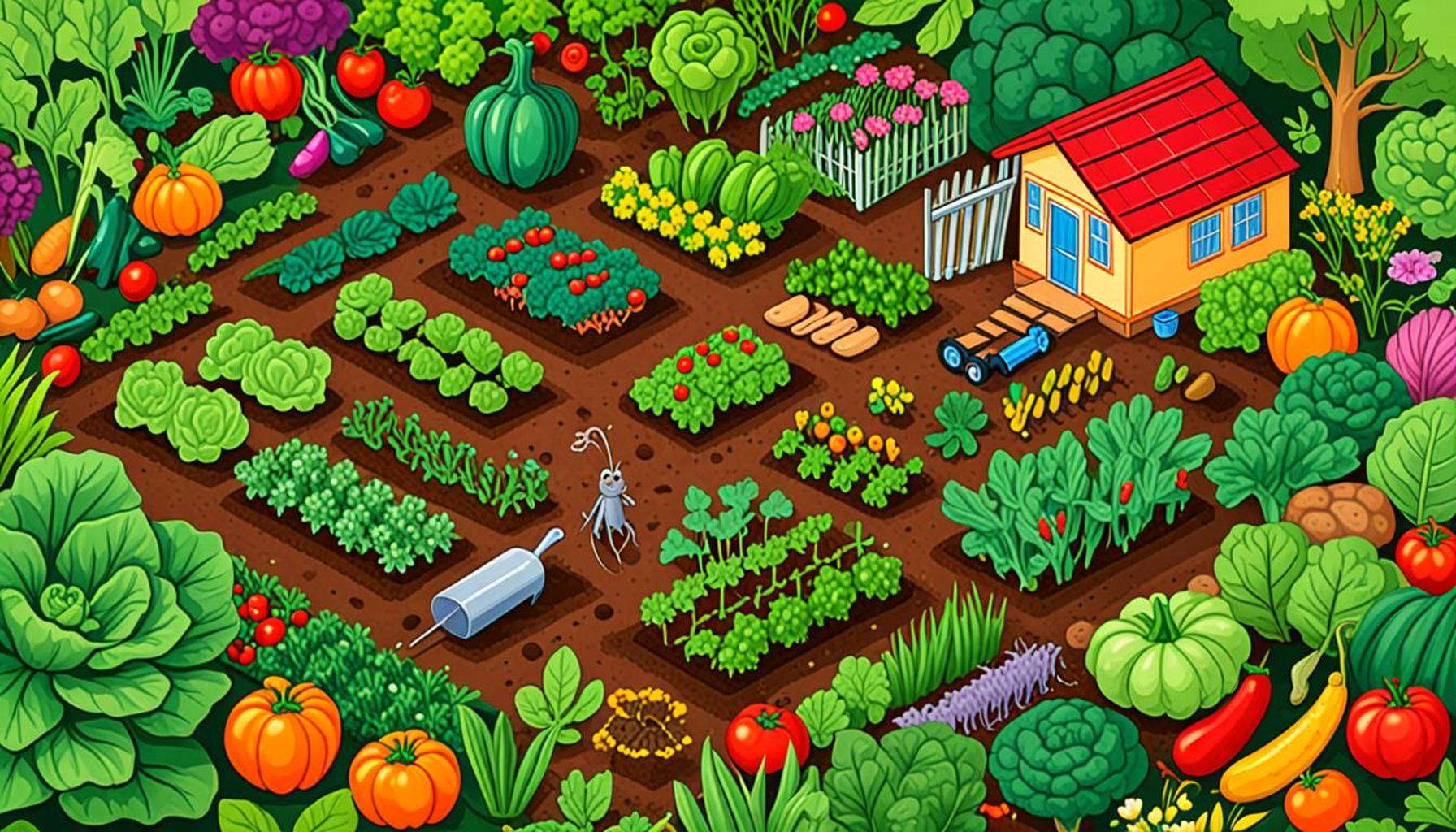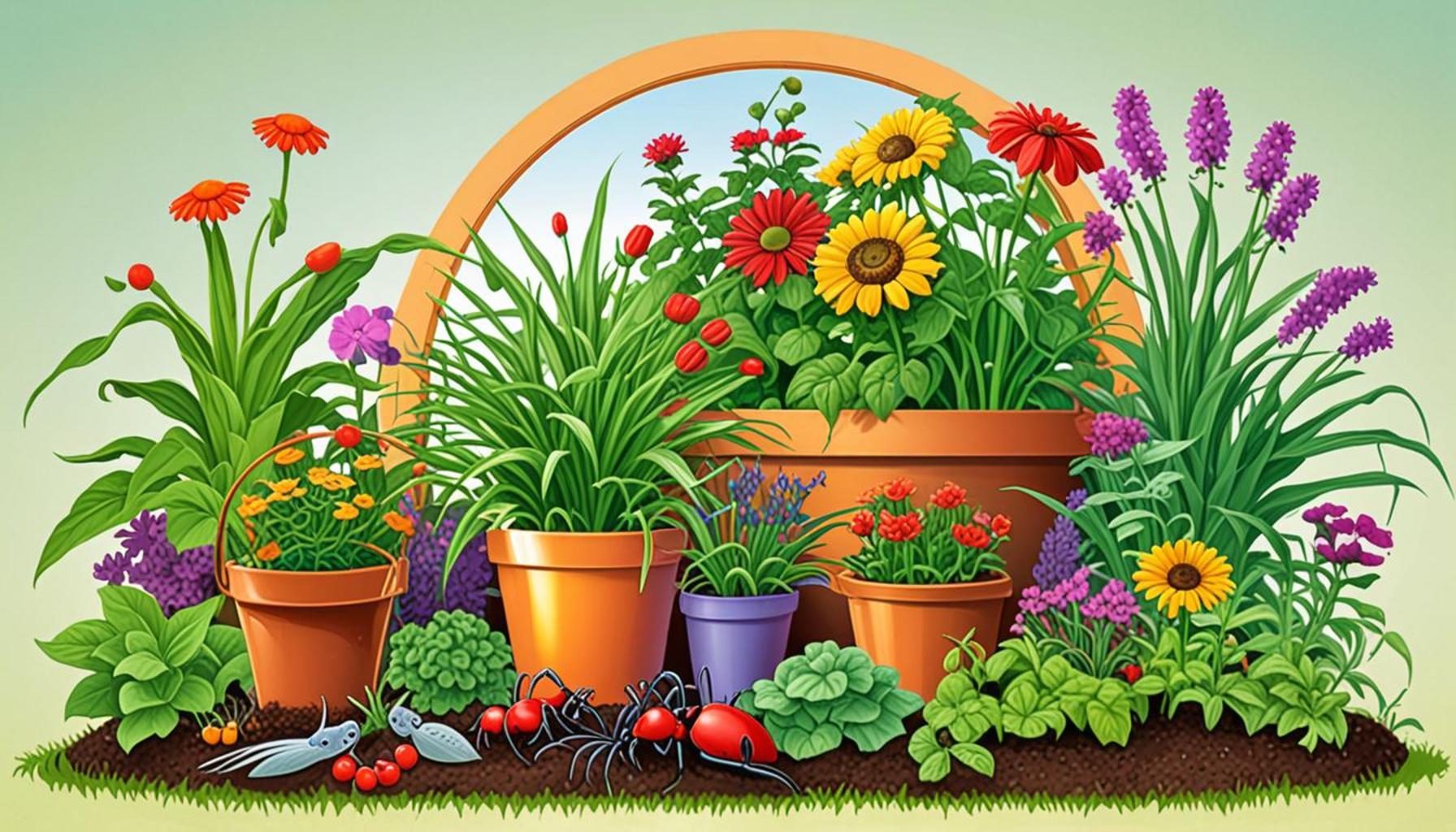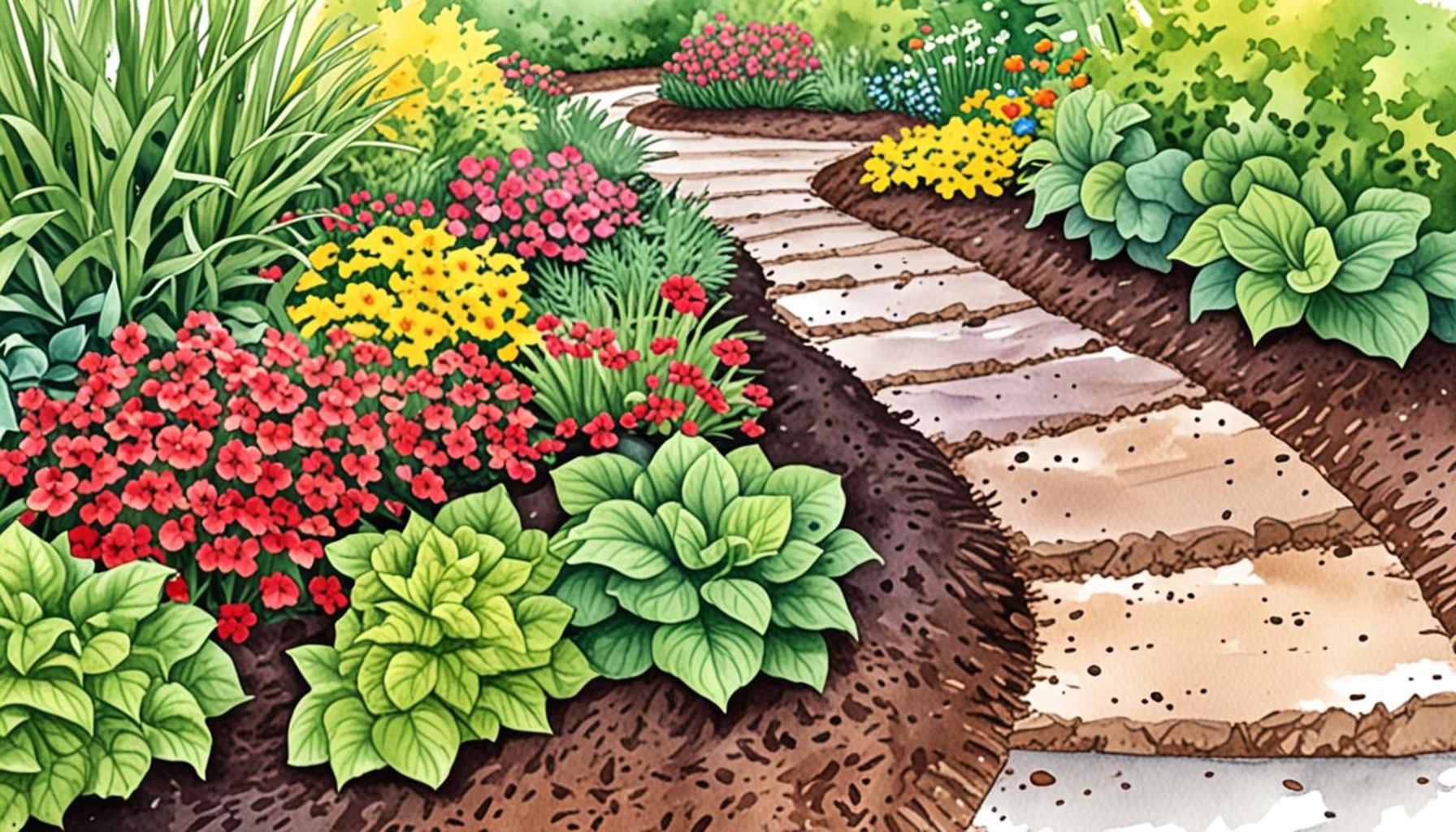Creating a Pest Management Plan for Your Home Vegetable Garden

The Importance of a Pest Management Plan
A thriving vegetable garden is the pride of many home gardeners. However, the threat of pests can quickly undermine that joy, turning flourishing plants into a struggling ecosystem. An effective pest management plan is crucial for safeguarding your homegrown produce, ensuring that each harvest is not only bountiful but also healthy.
Understanding the various pests that commonly invade vegetable gardens can tremendously enhance your response strategies. For example:
- Aphids – These tiny, sap-sucking insects can reproduce rapidly, leading to significant damage to tender leaves and stems. They excrete a sticky substance known as honeydew, which can attract ants and encourage the growth of sooty mold.
- Cutworms – This alarming pest, the larval stage of certain moths, operates primarily at night. They can sever young seedlings just above the soil line, effectively destroying your efforts before they’ve had a chance to flourish.
- Squash Bugs – Particularly notorious among squash and pumpkin crops, these pests suck the fluids from plants, causing them to wilt. Their eggs, which appear as small, yellowish clusters, can be found on the underside of leaves.
Creating a robust pest management plan involves several essential components:
- Prevention – Establishing physical barriers is often the first line of defense. Row covers can protect young plants from pests, while companion planting—growing mutually beneficial plants together, such as basil with tomatoes—can deter harmful insects naturally.
- Monitoring – Regular inspections of your plants are vital. Checking for telltale signs of pests—including discolored leaves, holes, and insect presence—can help catch infestations early. Keeping a garden journal to track changes and interventions can also prove invaluable.
- Control Methods – If pests do appear, both organic and chemical solutions are available. Organic options include insecticidal soaps and neem oil, which disrupt insect growth and can be less harmful to beneficial insects. Reserve chemical treatments for severe infestations, and use them judiciously to minimize their impact on the overall ecosystem of your garden.
By taking these proactive measures, you can cultivate not just vegetables, but also a resilient environment that can withstand the occasional pest attack. This guide aims to empower you with the tools needed for effective pest management, enabling you to enjoy a vegetable garden that flourishes despite the challenges. Prepare to dive deep into sustainable gardening practices that will not only arm you against pests but also promote a healthy and vibrant agricultural lifestyle!
DISCOVER MORE: Click here to dive into the world of edible flowering plants
Components of a Successful Pest Management Plan
Understanding the intricate dynamics of your vegetable garden is the cornerstone of an effective pest management plan. Pests, while often seen as merely nuisances, can disrupt the delicate balance of your garden’s ecosystem. To cultivate a thriving vegetable garden, it’s essential to take a holistic approach by incorporating prevention, monitoring, and control methods. Each component plays a vital role in ensuring the health and productivity of your plants.
The Role of Prevention
Prevention strategies are your first line of defense against pests. By implementing preventative measures, you can significantly reduce the likelihood of infestations before they occur. Here are some tried-and-true practices every gardener should consider:
- Physical Barriers: Utilizing row covers, netting, and floating row covers can create a shield that physically keeps pests away from your plants. These barriers allow light and rain to reach your vegetables while deterring troublesome insects.
- Companion Planting: This method involves growing diverse plants together to enhance growth and deter pests. For instance, planting marigolds alongside tomatoes can repel aphids and nematodes, acting as a natural pest deterrent.
- Healthy Soil: Investing in soil health is a long-term strategy that promotes robust plants better equipped to fend off pests. Regularly amending soil with organic matter, such as compost, can bolster its nutrient content and improve plant resilience.
Importance of Monitoring
Once your preventative measures are in place, the next step is monitoring. Regular inspections are crucial to catching potential problems early. Keep an eye out for:
- Symptoms of Infestation: Yellowing leaves, bowed stems, or unexpected holes in foliage can indicate pest activity. Early identification allows for swifter intervention.
- Presence of Pests: Actively search for pests or their signs. Many insects, such as aphids and spider mites, tend to cluster on the undersides of leaves.
- Garden Journal: Documenting your observations in a garden journal can help track pest patterns and inform your future strategies, making it easier to recognize signs of trouble.
Control Methods for Pests
If pests do infiltrate your vegetable garden, it’s essential to have a plan for control methods. Depending on the severity of the infestation, various solutions can be employed:
- Organic Treatments: Insecticidal soaps, neem oil, and diatomaceous earth are non-toxic options that disrupt the life cycles of pests while preserving beneficial insects.
- Cultural Controls: Adjusting cultural practices, such as crop rotation or altering planting times, can reduce the likelihood of certain pests establishing themselves.
- Chemical Solutions: While typically reserved for severe infestations, targeted chemical treatments can effectively manage pests. However, use these with caution and follow application guidelines to minimize harm to beneficial organisms.
Implementing these components in your pest management plan not only protects your vegetables but also fosters a healthier garden ecosystem, empowering you to reap the rewards of your hard work. Remember, a vigilant and proactive approach is key to cultivating a pest-resistant environment.
| Category | Key Features |
|---|---|
| Preventive Measures | Implement strategies such as crop rotation and companion planting to deter pests naturally. |
| Monitoring Techniques | Regularly check plants for pests and signs of damage, allowing for early intervention. |
| Natural Solutions | Utilize organic repellents and traps to manage infestations without harming beneficial insects. |
| Community Support | Join local gardening groups for advice and shared experiences about effective pest management strategies. |
In creating a pest management plan for your home vegetable garden, it is essential to focus on preventive measures that offer a foundation for your garden’s health. Crop rotation and companion planting can serve to deter pests effectively without resorting to chemical measures. Such strategies not only optimize your yield but also minimize ecological impact.Regular monitoring techniques also play a crucial role in the early detection of pest presence. By inspecting your plants frequently, you can address infestations before they escalate into larger problems. This proactive approach is vital for sustaining a healthy garden.Consider integrating natural solutions into your plan. Organic repellents and traps can be incredibly effective, providing control over unwelcome pests while safeguarding beneficial species essential for pollination and soil health.Additionally, leverage the power of community support. Engaging with other gardeners can lead to valuable insights and practical tips on managing pests effectively, enriching your gardening experience and knowledge base. Emphasizing these areas will greatly enhance your pest management strategy, ensuring a bountiful harvest from your home vegetable garden.
DISCOVER MORE: Click here to learn natural pest control strategies
Integrating Sustainable Practices in Pest Management
Creating a pest management plan goes beyond just immediate pest control; it is also about building a sustainable garden that works in harmony with nature. By integrating sustainable practices into your pest management plan, you can foster a long-term healthy environment for your vegetables. Here are some innovative strategies to consider:
Encouraging Beneficial Insects
One of the most effective strategies for pest management is to invite nature’s allies into your garden. Beneficial insects, such as ladybugs, lacewings, and parasitic wasps, play a critical role in controlling pest populations. Here’s how to attract these helpful allies:
- Diverse Planting: By planting a variety of species, you create a habitat for beneficial insects. Flowering plants like dill, fennel, and yarrow attract pollinators and predatory insects, facilitating an ecological balance in your garden.
- Providing Shelter: Building insect hotels or leaving debris in discreet areas of your garden can offer shelter to beneficial insects, encouraging them to settle in.
- Avoiding Pesticides: Refraining from using broad-spectrum pesticides can help preserve these allies. Targeted applications, when necessary, can be directed only at harmful pests without jeopardizing beneficial populations.
Soil Health and Pest Resistance
A strong correlation exists between soil health and the overall resilience of your garden. Healthy soil leads to vigorous plants that can withstand pest pressure. Consider these practices to cultivate stronger soil:
- Crop Rotation: Changing the location of certain crops each season can disrupt pest life cycles and prevent soil-borne diseases. For instance, rotating nightshades like tomatoes and peppers can diminish the incidence of root-knot nematodes.
- Cover Crops: Planting cover crops during the off-season, like clover or vetch, can enhance soil organic matter, suppress weeds, and even deter pests while improving soil structure.
- Composting: Regularly adding compost enriches your soil with nutrients, aiding in the development of strong plants. Stronger plants are typically less susceptible to pests.
Implementing Integrated Pest Management (IPM)
Integrated Pest Management (IPM) is a systematic approach that blends multiple control strategies for comprehensive pest management. This method prioritizes ecological balance while effectively addressing pest problems:
- Threshold Levels: Establish economic thresholds for pests, which dictate when action should be taken. If pests exceed this level, targeted control measures can be implemented without unnecessary treatments.
- Education and Training: Keep yourself informed about pest issues specific to your region. Local agricultural extension services often provide resources and workshops that can enhance your knowledge and adaptability.
- Evaluation of Control Measures: Continually assess the effectiveness of pest control tactics through monitoring. Adjust your strategies according to what works best, making your plan dynamic and responsive to changing conditions.
By expanding the scope of your pest management plan to include sustainable practices and embracing an Integrated Pest Management approach, you will not only protect your vegetables but also contribute positively to the broader ecosystem. The objective is not merely to eliminate pests but to maintain a healthy garden that thrives in balance with its environment.
DISCOVER MORE: Click here to learn sustainable harvesting tips
Conclusion: Cultivating a Resilient and Flourishing Vegetable Garden
In conclusion, creating a robust pest management plan for your home vegetable garden is both an art and a science. By combining sustainable practices with a strategic approach, you can not only safeguard your crops but also enhance their growth and resilience. The integration of beneficial insects into your garden ecosystem, the emphasis on soil health, and the implementation of an Integrated Pest Management (IPM) framework are all crucial elements that contribute to the successful management of pests.
As you embark on this gardening journey, remember that the goal is not merely to obliterate pests but to establish a harmonious environment where your plants can thrive alongside them. By fostering diversity within your garden and promoting natural pest control methods, you pave the way for a sustainable gardening practice that benefits not just your vegetables, but the surrounding ecosystem as well.
Moreover, ongoing education and adaptation are essential. Resources from local agricultural extensions can provide invaluable insights tailored to your specific region, enriching your knowledge of pest management. As you continuously monitor and adjust your strategies, you will cultivate not just a garden, but a living, evolving landscape that yields bountiful harvests year after year.
Ultimately, the journey of creating a pest management plan is an enriching experience that deepens your understanding of the intricate relationships within nature. By embracing these principles and practices, you ensure that your home vegetable garden flourishes, providing fresh produce and a connection to the rhythms of the earth.


